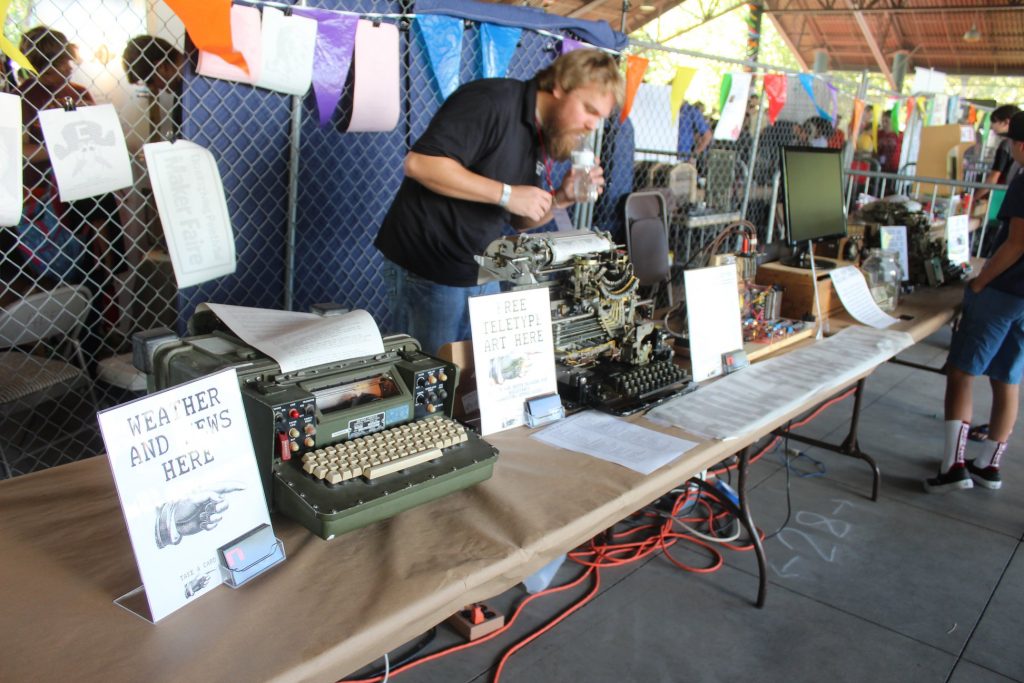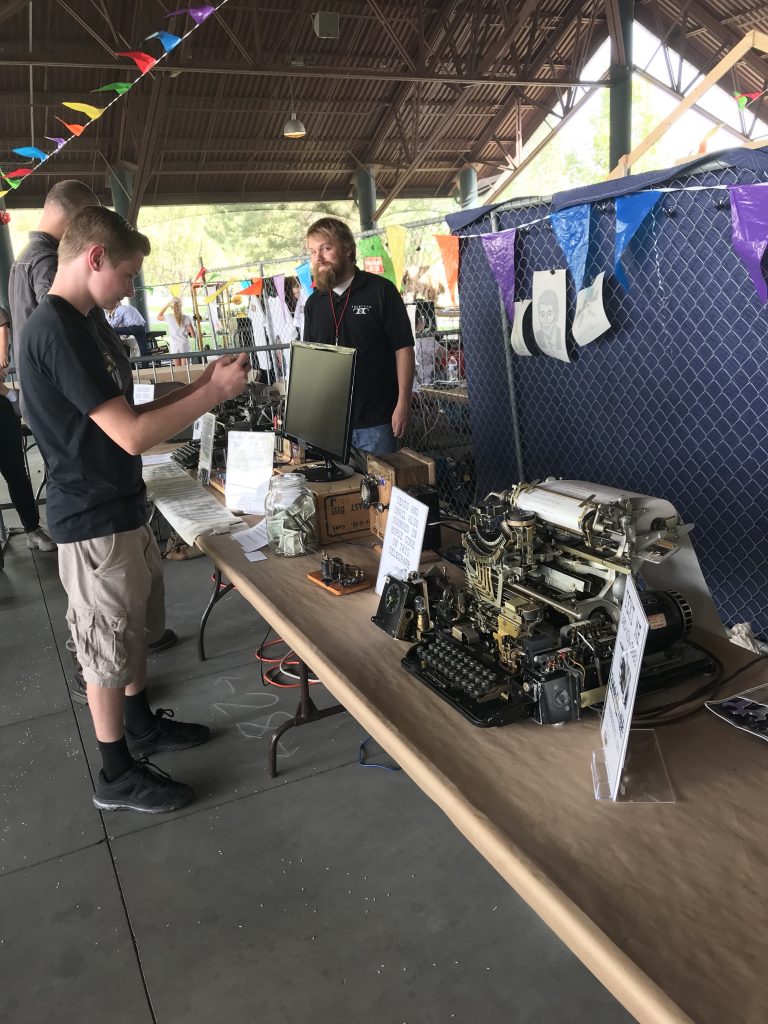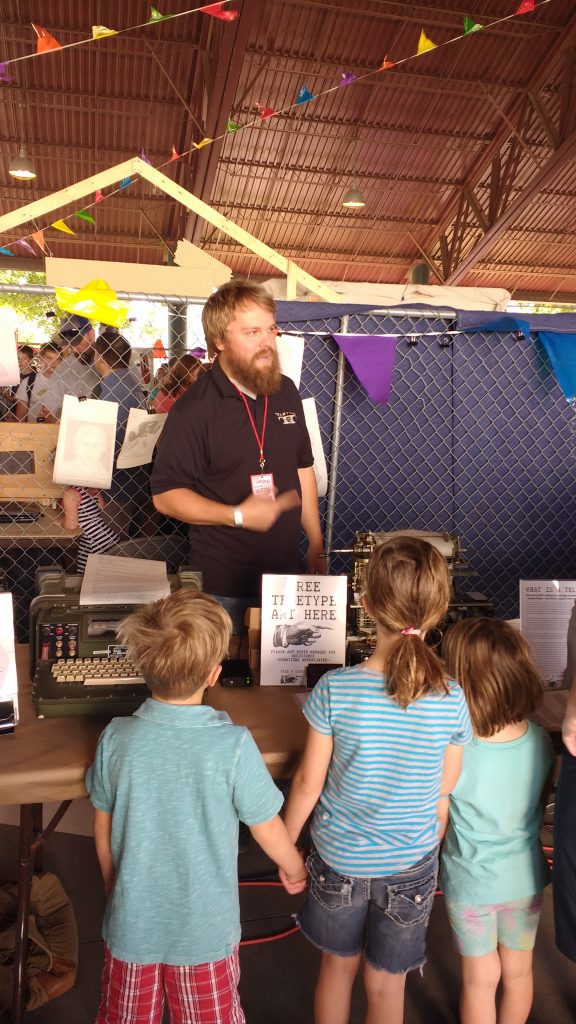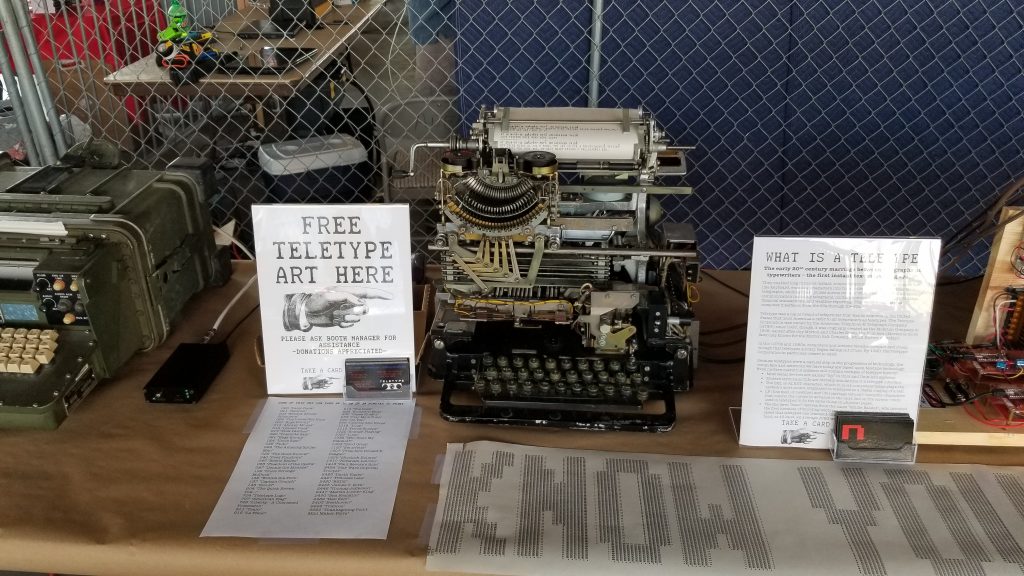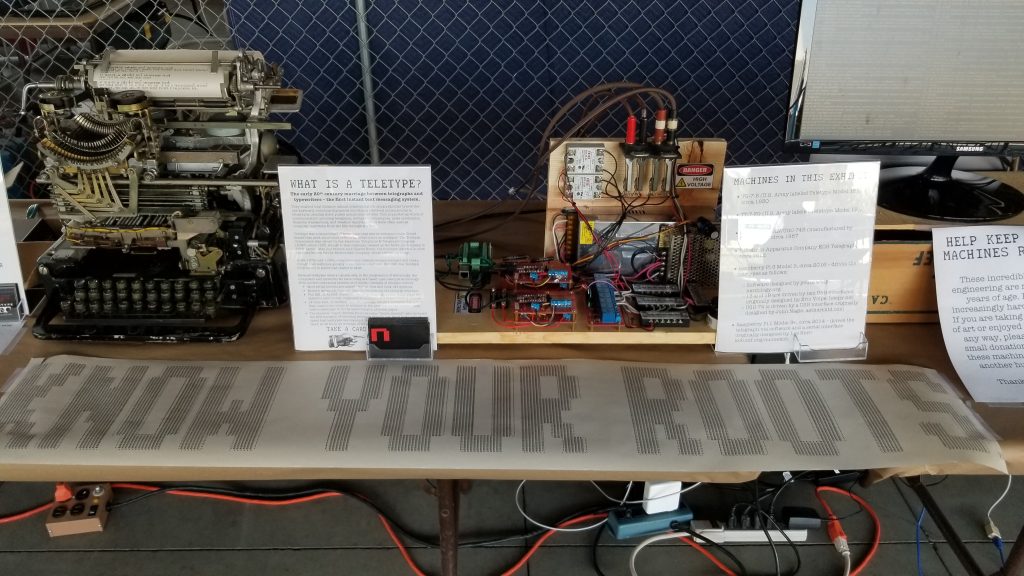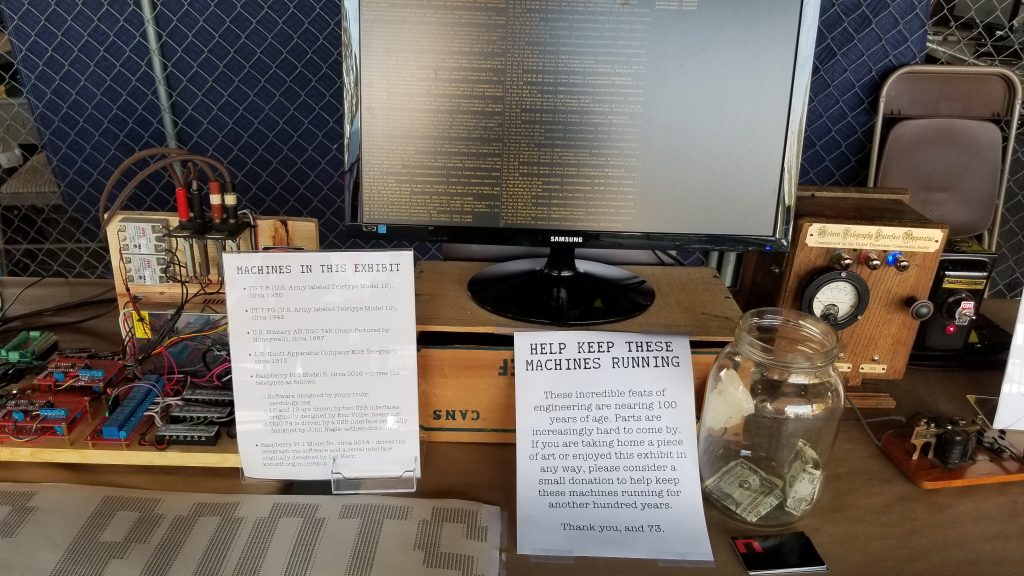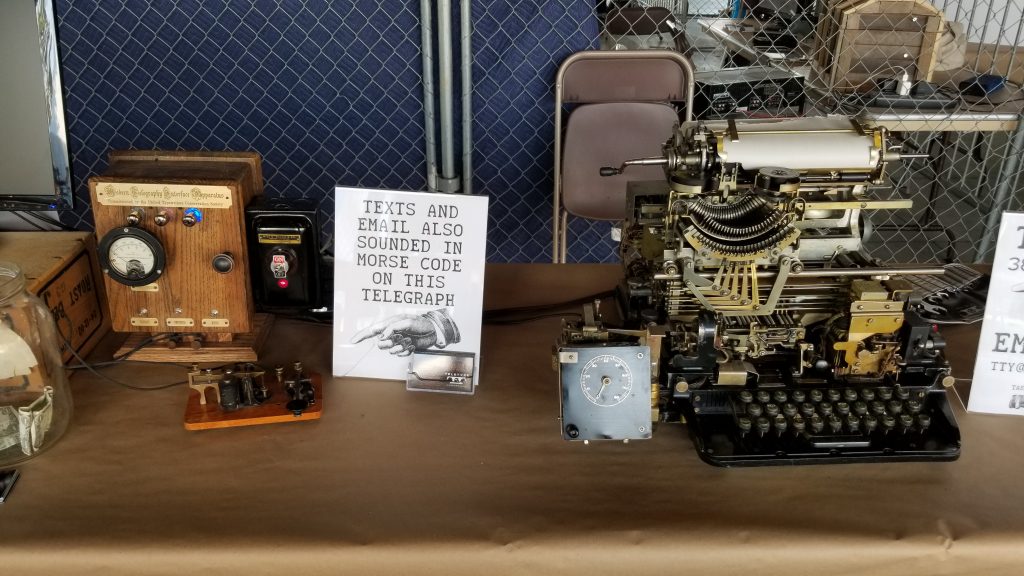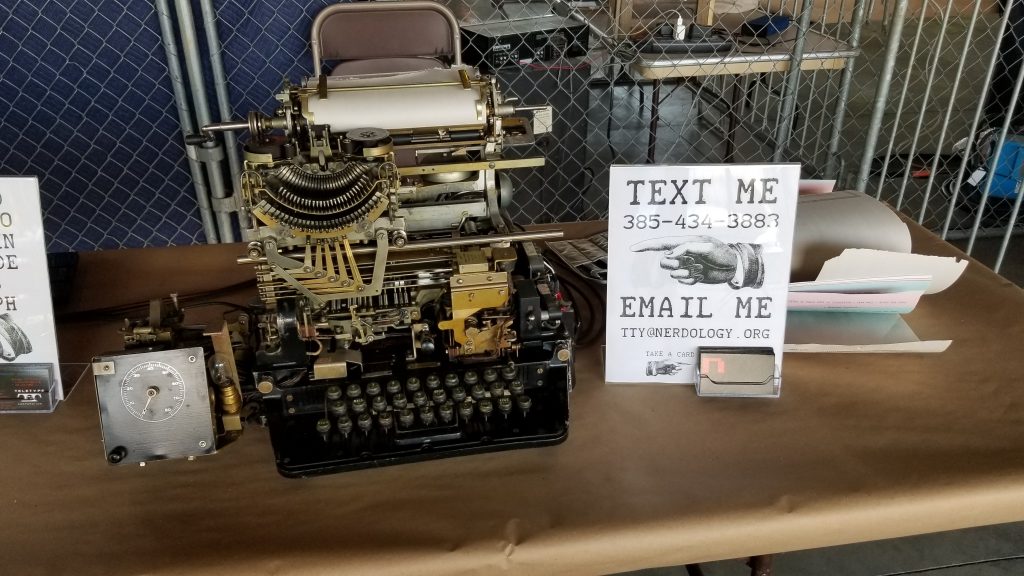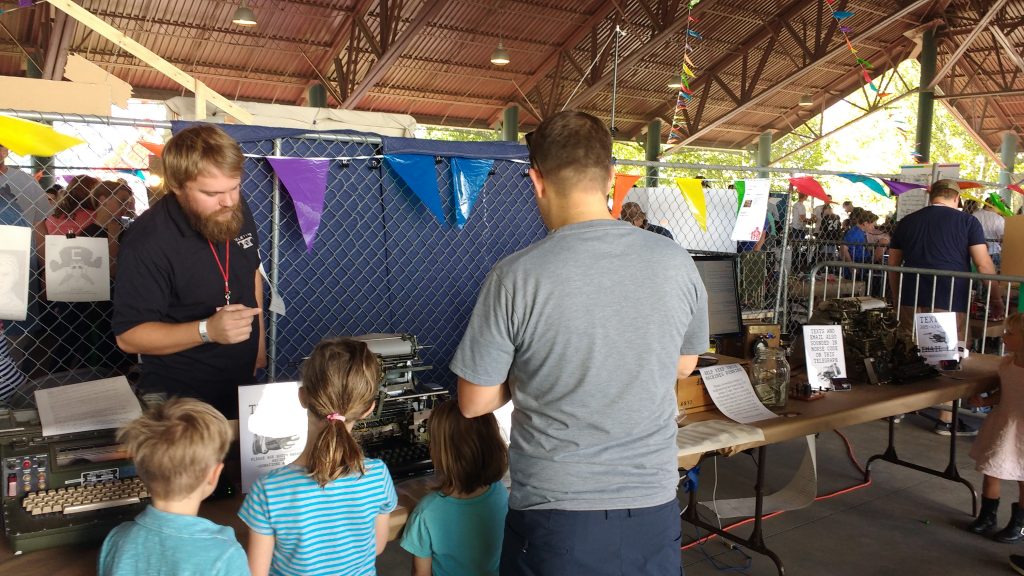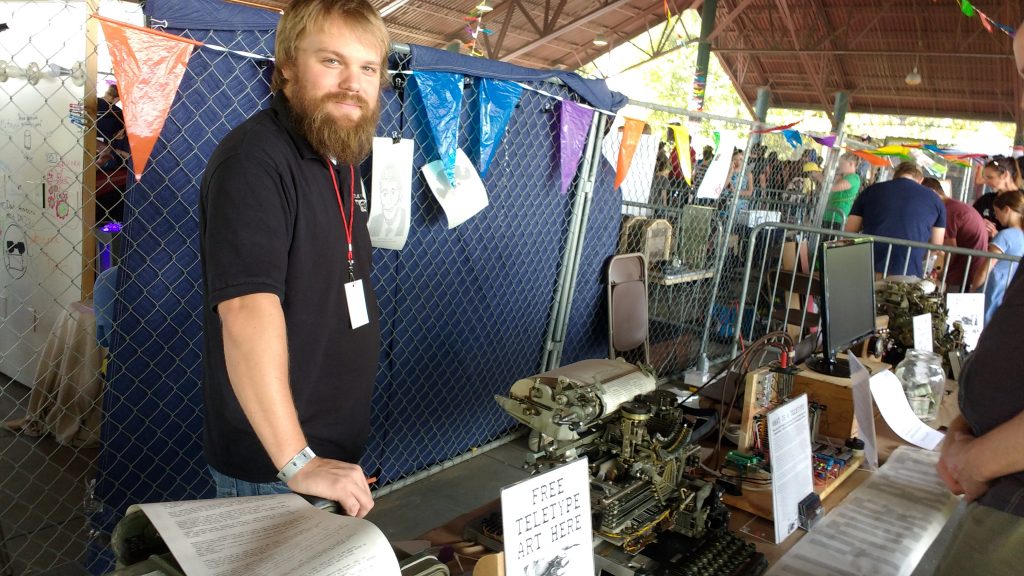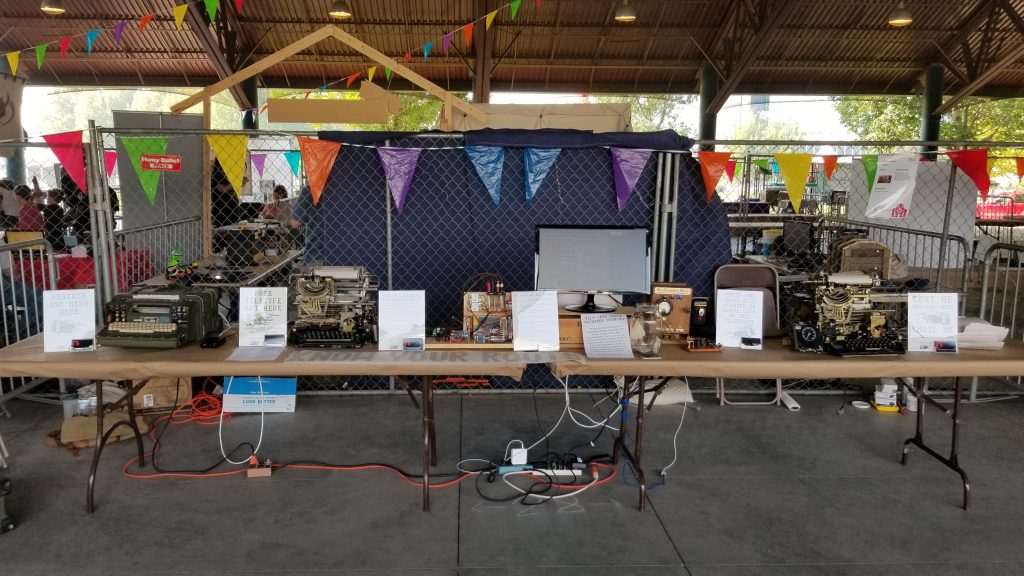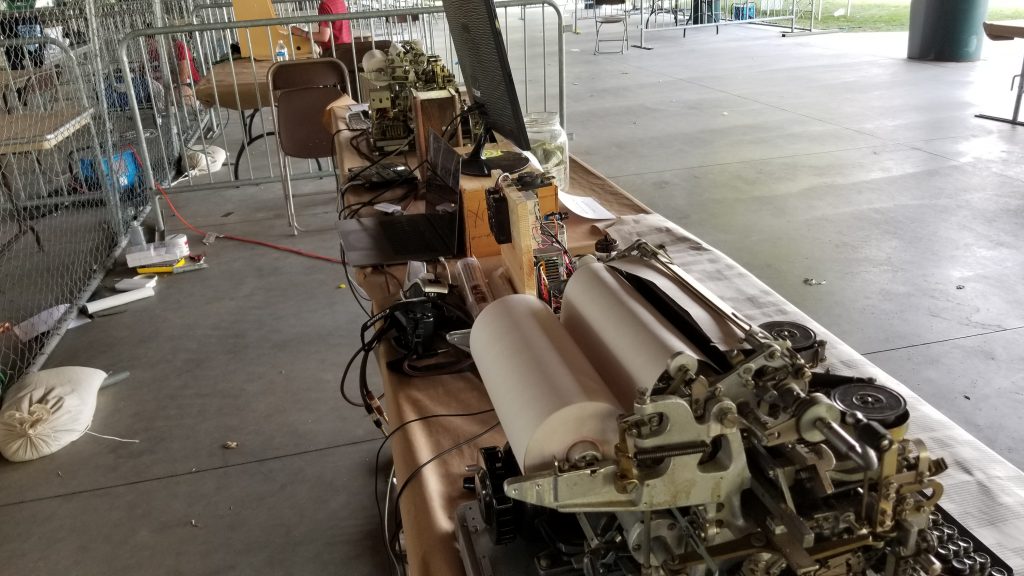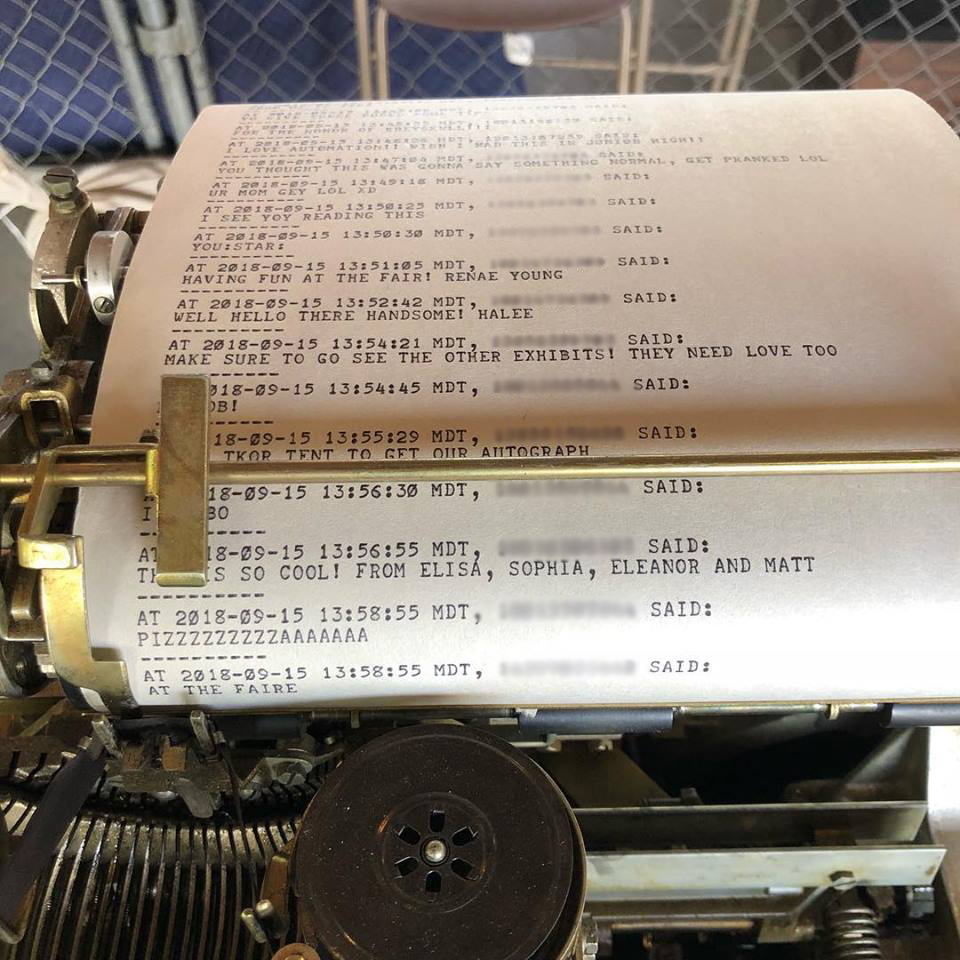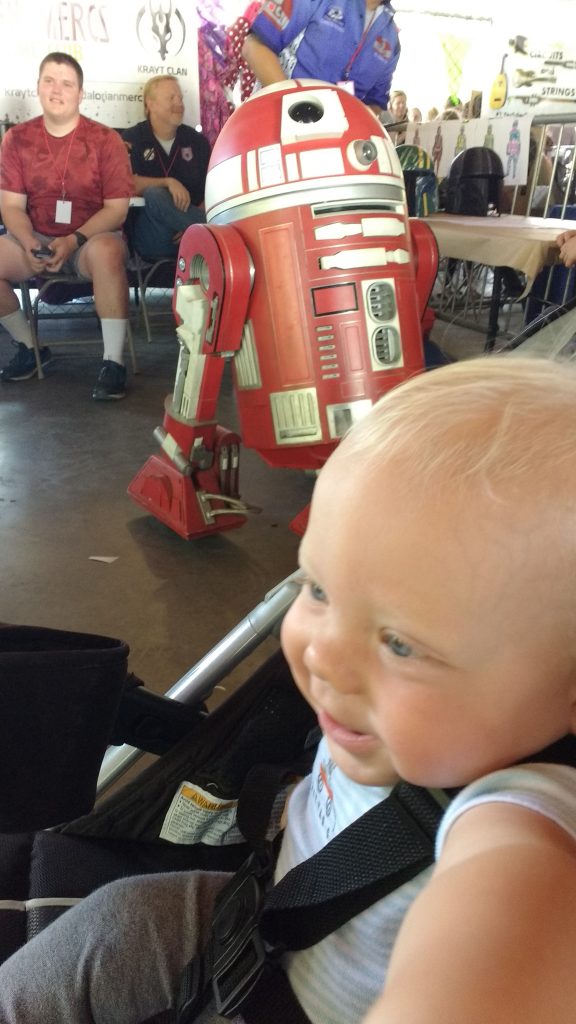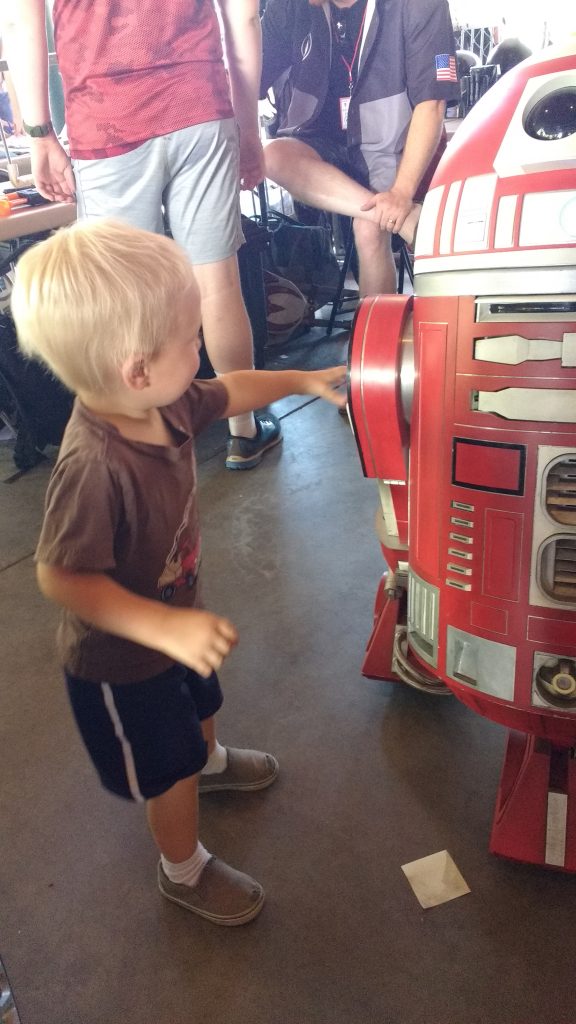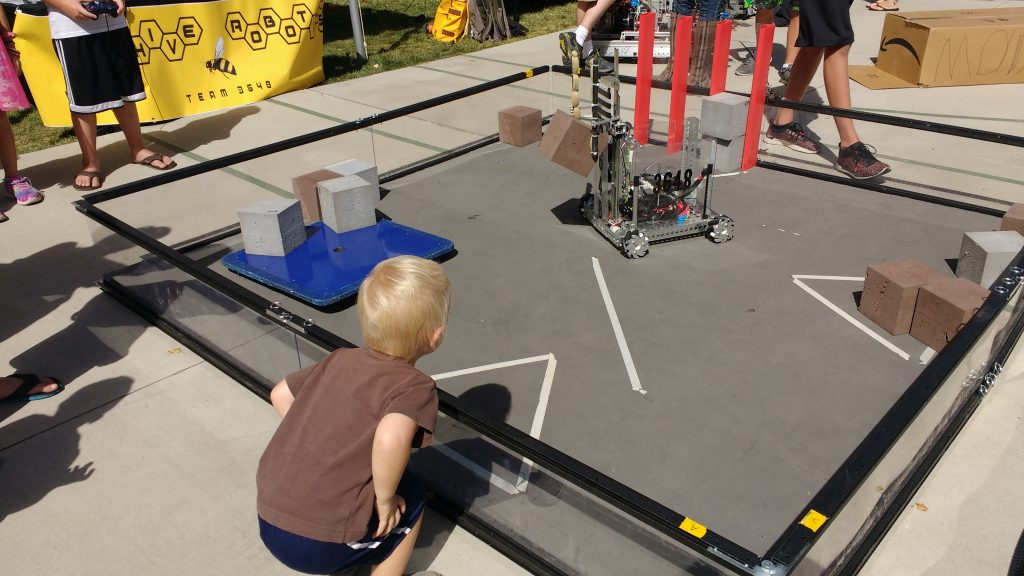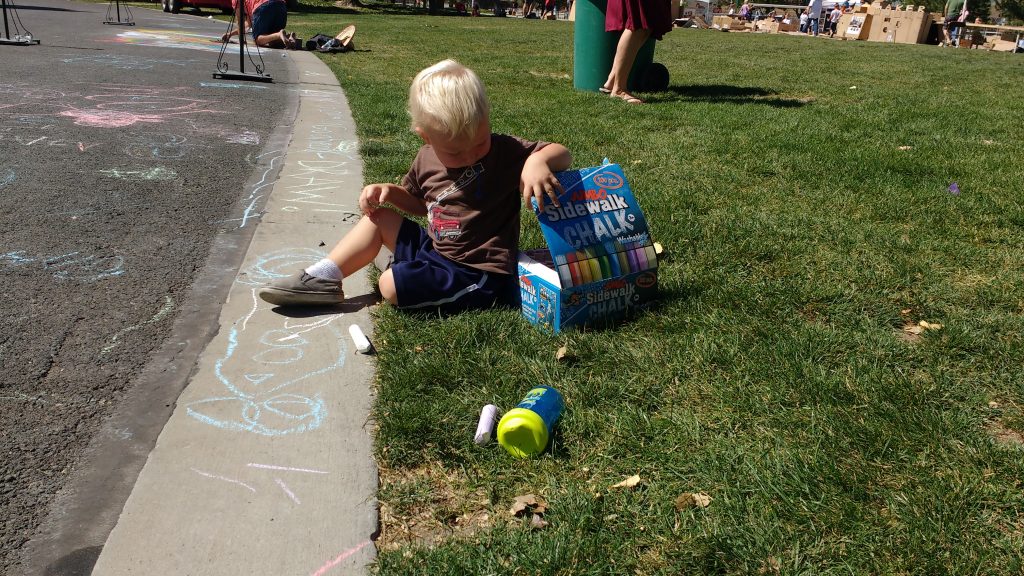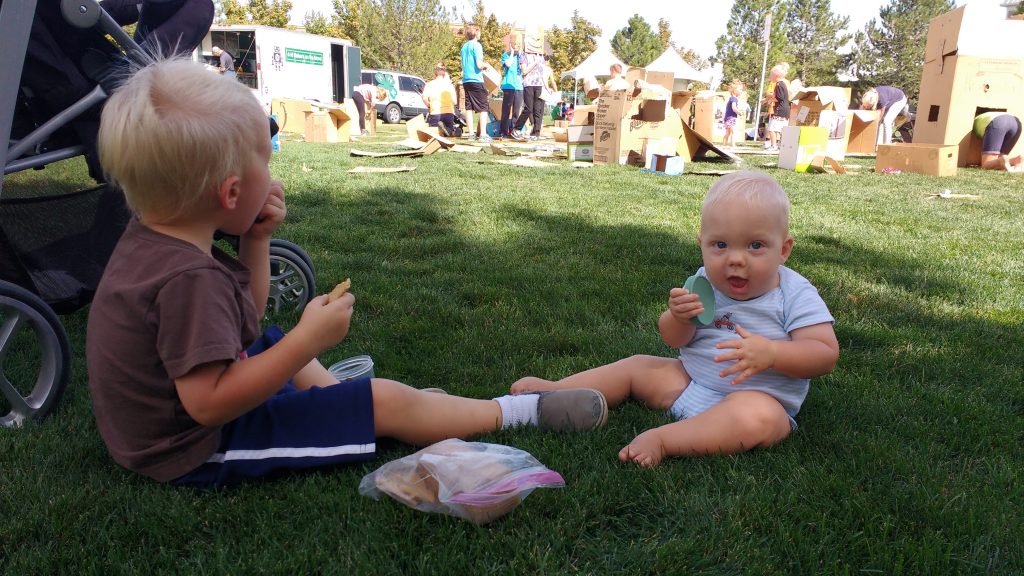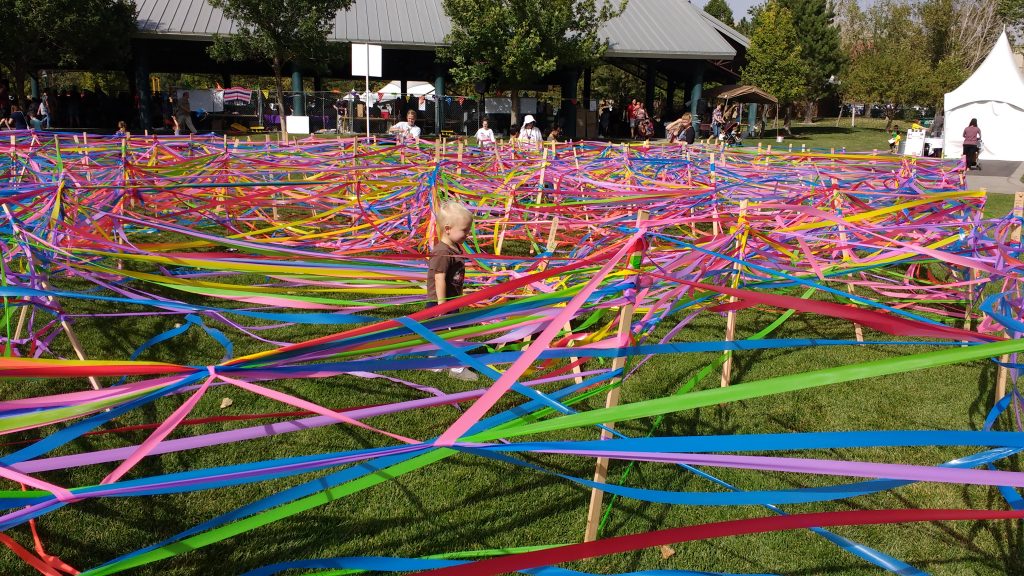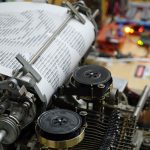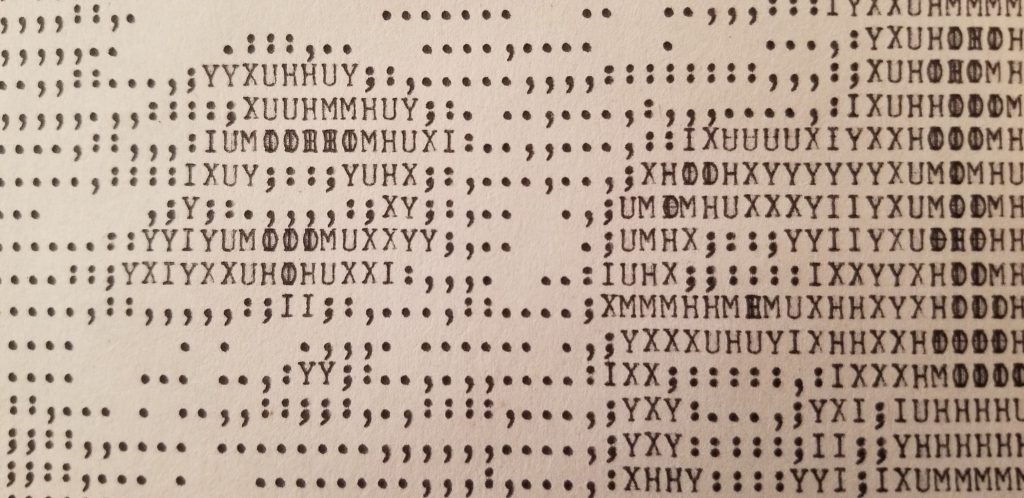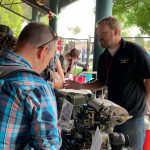I began writing this in January, 2019 and have been so preoccupied with the comings and goings of existence that I rather forgot about it. So let’s finish it up and send it out to the vast pit of the internet and see what we bring up.
Having had a stupendous time at the Salt Lake City Mini Maker Faire earlier in 2018, I wasn’t about to let another one go by without me lugging my 100+ pound machines across the valley and let hundreds of people young and old enjoy the fascinating, almost neo-Victorian style of communication that has been all but forgotten by a world that would not exist without it as a part of its foundation (deep breath– that was a long sentence). I now hereby write about my escapades, both the near-catastrophic events leading up to the event, the good and bad during the event, and saying goodbye to the great machines for a time just afterward, complete with photographic evidence.
Another Advertisement
I had created a sort of advertisement for the previous faire in Salt Lake, so a precedent had been set. I couldn’t simply go to the faire without creating one specific to the Thanksgiving Point faire:
Bigger and better
With the previous Faire a great success, I began to make plans for the next even though it was five months away. This time it would be bigger and better. In addition to the one Model 19 printing out text messages and emails and the Model 15 printing out art:
- I scripted some capabilities so that my previously built Modern Telegraphy Interface Apparatus would sound out in morse code the same text messages that were printed out on the Model 19.
- I brought my AN/UGC-74B: a very hefty (basically nuke-proof) teletype built by Honeywell for the U.S. military in the 1980s; also the first teletype I ever acquired. I would write some scripts to download and parse news and local weather reports for it to print every couple of minutes.
- I requested two 10-foot tables since with just the two teletypes at the last faire, the single 10-foot table was rather cramped.
- I designed many more signs and purchased acrylic sign holders to hold them up vertically.
- I designed and printed custom business cards for people to take as well as to hand out with all free art.
I also decided to slightly alter and fix a few pieces of functionality, namely:
- A few bugs that had come up last time
- Cause the bell to be rung a couple times right before a text or email is printed to alert for the incoming message, which people very much enjoyed
- Cause the bell to be rung three times after a piece of art is done printing to alert that it is finished
These were fairly easy to fix and had a great effect on the overall product. An example of small investment for large return.
One of the bits that took the most amount of work was the news and weather parser. The premise is simple: download news and weather from RSS feeds and the DarkSky API, parse them, and print out the result.
As I wanted to print out one headline every minute, interspersed every five minutes with the latest weather report, I had to create a buffer: the latest news stories from various feeds are downloaded into buffer; this downloading starts when launching the program and downloads dozens of stories depending on how many feeds and stories are available, but it continues running and adds any new stories found throughout the day.
A counter uses some basic logic to print one news story every minute, and on the fifth minute it grabs and parses the weather data. In other words, each time weather is printed, it is live within seconds, but since the news is downloaded into a buffer, much of it can end up having been posted hours before being printed. In this case, the point of the program is to print out news that’s somewhat recent– within the past 12 hours or so– to keep the printer running almost continuously. It is not intended to print only the latest items of the feed(s). This worked very well for this purpose as you will see in some of the pictures that the printer had been occupied most of the day with the printed paper being some fifteen or twenty feet long.
One of the more intensive bits I had to program was to provide software support for translating ASCII characters to ITA2 so I could print the beforementioned news and weather feeds on the 74B. Up until this point I relied exclusively upon the Volpe board to do the heavy lifting of encoding translation, but I was in contact with a fellow teletypian (Steve Garrison, N4TTY) who had built one of the Nagle boards and generously let me borrow his to run the 74B machine during this faire. As the Nagle board does not handle any ASCII/ITA2 translation like the Volpe board does, I had to create the translation. Others have tread here before, so I was able to gather some ideas from other software, but ultimately I had to create a new translation table and determine the best way to parse output and translate to the ITA2 bytes that the Nagle board understands.
Long story short is that it worked out well. The translation bit can even be used on the Volpe board since that board can have its translation disabled.
All the schemes of mice and men
I had completed the vast majority of work required before the first , though there was still quite a bit to go.
- Some original Teletype Corp-branded wrenches became available on eBay a few weeks before, and I pounced on them. These made tightening some loose bolts a breeze, particularly a problem I had been fighting on my Model 19 for months where the carriage would sometimes return one or one and a half spaces too far, resulting in non-uniform lines. I was finally able to tighten an eccentric screw properly that has kept this problem from recurring ever since.
- This is a section I stopped writing back in January, and now I don’t remember what my other schemes were. As seems to be standard with these faires, I stayed up until about five or six in the morning ensuring everything was working properly, but I don’t recall all the issues I ran into now. I do remember some mechanical issues that I thought would keep me from going to the faire, but I was able to work around them. Alas. Probably too boring for most people to read anyway. If you’re still reading, you’re either my mother or unusually interested in such tedious detail. And I’m purposefully avoiding the true tedium such as all the acrobatics I had to program into the software to get it to work properly and the hundreds of little bits of engineering and history I pick up along the way on these adventures. I freely admit that it has been too long (over a year) since this happened, so the rest of this post probably isn’t going to be nearly as interesting. So good on you, nerd. Now, back to our previously scheduled program.
I’m off to the faire!

Around five or six in the morning, I finally staggered into bed, only to get up an hour or so later and head down to the Electric Park at Thanksgiving Point with my machines crammed into the back of the Jeep.
I unloaded the machines, lugged them a few dozen feet to the booth, and set everything up. I’m not sure exactly how I jigsawed everything into the Jeep, but it was completely full. I have since gotten a small trailer to avoid lifting the ~100 pound machines to the height of the Jeep and save my back, so there is plenty of room.
Something new this time was the 100-pound AN/UGC-74B, a teleprinter manufactured by Honeywell for the U.S. military in the 1980s and a bit into the 1990s. According to one anecdotal source, these machines were used in some limited cases as late as the Iraq war in the early to mid aughts. They are basically nuke proof and would be able to handle some very adverse conditions including but not limited to a war in the earth’s armpit. As mentioned previously, this machine was driven by a Nagle board I borrowed from a fellow GreenKeys friend to print news and weather, and by the end of the day I probably had around 20 feet of paper full of recent news and weather blowing and waving in the wind (the faire was hosted under a pavilion outside, and it was a somewhat windy day). Kids tended to enjoy mashing the keys on this one and seemed less afraid to do so than on the two older, louder models (which I discouraged as that messes up the printing of the SMS messages and art). This machine still attracted less attention since it is much quieter and wasn’t printing any content that was nearly as interesting, though most people who noticed it did recognize that it had to be a military-specific model and enjoyed its own unique style and character. The one thing people kept asking me about the 74B, especially kids, was why a red light keeps blinking (that’s the incoming transmission indicator).
The other new bit was the Telegraph Apparatus I had built, as mentioned near the beginning here. This also did not get as much attention because it is small and decidedly quieter even though the sounder can tap out a tantalizing tune. The Telegraph Apparatus played all SMS messages printed on the Model 15 in American Morse Code.
No, it’s the Models 15 and 19 that are the true pied pipers, but the 74B and the Telegraph Apparatus are excellent accentuators for those visitors who are more aware and don’t have ADHD.
I did not keep an exact number (something that will be rectified in future faires), but I do know that the number of texts printed for visitors was in the hundreds, I believe closer to 1000 than not.
There seemed to be many, many more people than the previous faire, and I was placed almost directly by the main entrance. The clarion call of the machines hammering away drew the crowd from the entrance in droves. There was only a brief few moments of silence when I was finally able to take a few photos, some of which are below for your enjoyment.
I did not get to take any video again this time. I keep wanting to capture the moments where people figure out what’s going on and create a reel showing the enjoyment the machines bring, but it’s hard to do that while running the booth. I need an assistant; unfortunately all my boys are still too little to run the booth like that.
That being said, I was able to find one video of the faire on YouTube which briefly features my machines, below:
No, they are not running on Arduinos. A Raspberry Pi controls everything, and a couple of custom boards (the Volpe boards, not my design but my build) handle interfacing between the Pi and the teletypes. The Atmel chip on the boards I suppose could be compared to the Atmel chips used on various Arduinos, but that’s as close as it comes to an Arduino.
Until we meet again
The wind picked up and kept knocking over my new acrylic signs, a couple of which broke. That’s just as well because only about two people appeared to have noticed the massive text specifying that they could text one machine or read news from another. One of these days I am going to create massively large banners. It’s likely even those will be ignored, just like the people who insist that the machines are heavily modified typewriters keep ignoring me when I say they are entirely original.
The time came to pack up. Some people couldn’t stop talking, so I got delayed. Yes, it is the best booth, but I have to go home.
…except the machines did not follow me home. I ruefully drove them over to a storage unit on SR-73, lovingly wrapped them up in protective wrap, placed them gently inside, and slowly closed the garage-style door as they peered back at me, their eyes glimmering in a deeply hurt stare.
As we were about to move out of our old house the next week and bum around in some basements for three months (which became seven months and tens of thousands of dollars over budget– thanks for the lies, Clyde Homes), I had to say goodbye to my machines for quite some time.
I discovered in this process that somehow I had lost the oil plug for the main shaft of my Model 15. Luckily I found it about a week later on the basement floor as I moved everything else out– I must have forgotten to put it back in place while oiling the main shaft.
It was a good run, and it would not be my last. No, I was just getting started. Check back in again and subscribe to the YouTube channel to see what festivities are coming up next.
But wait; there’s more
With the machines stowed away for the long haul, I took a bit of time to make an extended version of the advertisement I created to show off the machine’s glory more fully. Below:
Asides
Some chance encounters my boys had at the faire:

